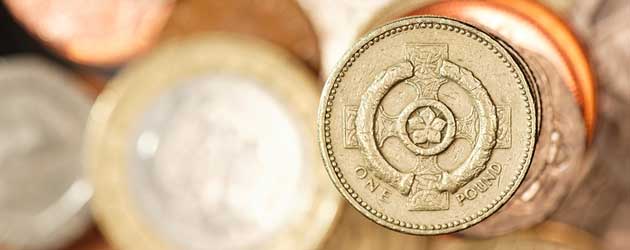
The Pound continued to reap the benefits of Thursday’s stronger-than-expected GDP score on Friday as traders were buoyed by the news that Britain expanded by 0.3% during the first quarter, and therefore avoided sliding into a triple-dip recession. UK growth was forecast to come in at just 0.1%, and many had predicted a slender contraction.
Sterling rallied further against the Euro (GBP/EUR) and US Dollar (GBP/USD) on Friday as soft data out of the world’s largest economy underwhelmed market expectations. US Q1 GDP had been forecast to grow at an annualised rate of 3.0%, but the actual report showed a slightly less encouraging score of 2.5%. The disappointing result was largely brought about by a -4.0% slide in government spending, as the infamous ‘fiscal cliff’ and ‘sequestration’ of spending cuts took their toll on the fragile US economy.
The softer-than-expected print follows the recent trend of subdued economic indicators – most famously the huge under-performance of the US Non-farm Payroll report for March – which has led to the popular consensus that the Federal Reserve will continue to inject $85 billion a month of electronically printed money into the US economy for the rest of 2013. Annalisa Piazza of Newedge Strategy said:
“Looking ahead, risks for growth are skewed to the downside in the second quarter…such a scenario fully justifies a ‘wait and see’ approach at next week’s Federal Reserve meeting as policy-makers are expected to wait for future evidence before making any decision on future policy steps. The ongoing $85 billion monthly asset purchase is expected to be confirmed next month”.
In response to the news, Sterling struck a fresh 2-month high of 1.5948 against the US Dollar (GBP/USD). The improvement marked a 0.6 cent daily gain for the UK currency, which was mirrored by a 0.35 cent strengthening against the single currency. The Pound to Euro exchange rate (GBP/EUR) broke through resistance levels to hit a 3-month high of 1.1907.
The Euro was damaged by news that Spain now foresees negative economic growth of -1.3% during 2013, compared to previous estimates of -0.5% contraction. GDP is expected to grow by 0.4% in 2014, despite the budget deficit remaining above the EU-imposed target of 3.0% until 2016. Spain also cut its austerity drive in an attempt to relax some pressure on the suffocating Spanish economy. Nicholas Spiro of Spiro Sovereign Strategy argues that the latest decision reflects a growing mood of discontent towards the extremely rapid austerity measures that have ravaged large parts of Southern Europe over the last few years:
“Spain has, to all intensive purposes, thrown in the towel on fiscal austerity. The scale of the government’s revisions to the country’s GDP and budget deficit targets underscore the extent to which front-loaded fiscal retrenchment has exacerbated Spain’s economic downturn and become self-defeating”.
The Euro has the potential to cede more ground against Sterling over the coming week as Eurozone CPI inflation is expected to tick lower to 1.6%, Unemployment is forecast to hit a fresh all-time high of 12.1%, and the European Central Bank is narrowly predicted to reduce the benchmark interest rate from 0.75% to a new record low of 0.50%. A breach of resistance at 1.2000 for GBP/EUR would represent a significant psychological achievement.
If US Non-farm Payrolls fail to impress during April then GBP/USD could quite conceivably rise above technical resistance at 1.5600. Similarly an overtly dovish FOMC Minutes report could signal Sterling strength over the US Dollar.

Comments are closed.